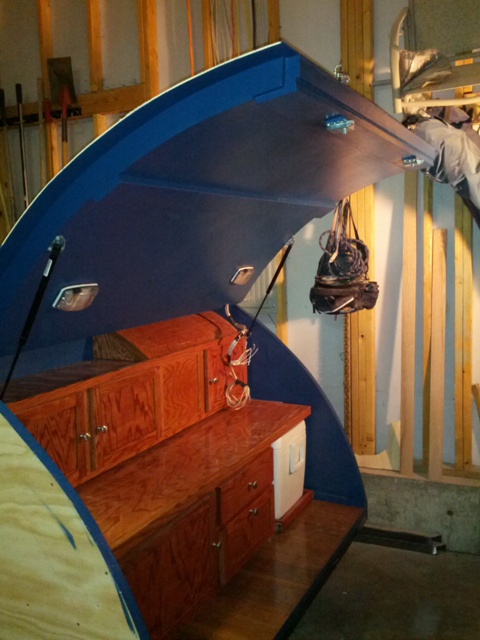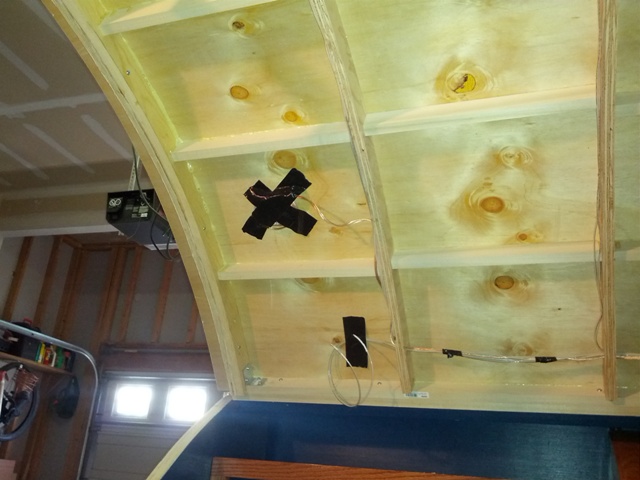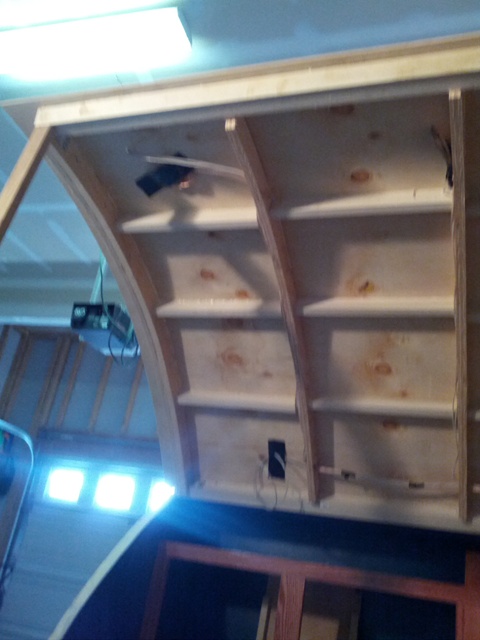What Goes Up.....
Who ever said "What goes up-must come down" was sooooooo wrong. There might have been a slight over estimation on my part as well.
So I ordered up some sweet gas struts for the hatch-I wanted to have them installed prior to making final adjustments and installation of handles. I did some research then decided more is better and then ordered something different. Long story short, I installed them and started to rip out the hinge (one screw needed reset-no big damage) when I tried to close them. They didnt even budge or pretend like they want to close-I even gave them a once over to see if there was a lock on them somewhere.
I ordered a columbia strut CS2000-150 which is a 20" extended strut with 150lb force at extension. They also carry struts with 120, 110, 90, 60, 30, etc.
Below is the best pics I have of the hatch interior structure. I don't have a total weight (est. 50-65lbs??) or the weight at the point of attachment. This is what I think I need to determine. Does anyone have any suggestions on size?
I plan on taking a luggage scale and measure the weight of the door at the point of attachment and at the middle of the hatch at height. Does anyone know how I would use this information.



So I ordered up some sweet gas struts for the hatch-I wanted to have them installed prior to making final adjustments and installation of handles. I did some research then decided more is better and then ordered something different. Long story short, I installed them and started to rip out the hinge (one screw needed reset-no big damage) when I tried to close them. They didnt even budge or pretend like they want to close-I even gave them a once over to see if there was a lock on them somewhere.
I ordered a columbia strut CS2000-150 which is a 20" extended strut with 150lb force at extension. They also carry struts with 120, 110, 90, 60, 30, etc.
Below is the best pics I have of the hatch interior structure. I don't have a total weight (est. 50-65lbs??) or the weight at the point of attachment. This is what I think I need to determine. Does anyone have any suggestions on size?
I plan on taking a luggage scale and measure the weight of the door at the point of attachment and at the middle of the hatch at height. Does anyone know how I would use this information.
 ).
).


